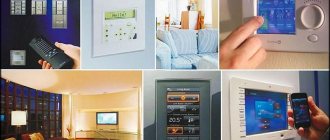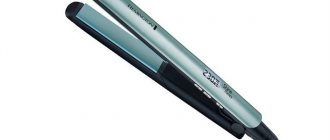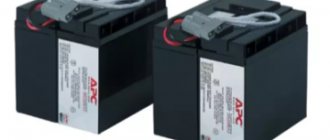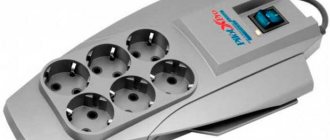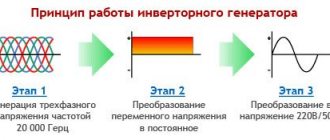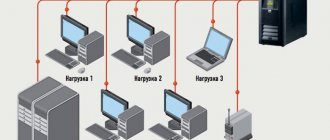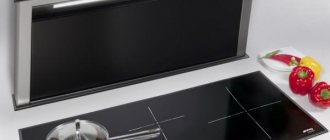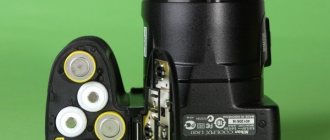To choose a split system for a home, for an apartment with optimal parameters, you need to compare the area and parameters of the room with the power of the device, analyze the required functionality and modes, temperature range, and the ability to adjust air flows. Additional options are appreciated: humidification, auto control. It is important to correctly determine the size of the device: regular or inverter; on the wall, floor; channel, window.
What is a split system
The split system is a type of climate control equipment, air conditioning systems (ACC), and air conditioners. In this case, the products are not monoblock, but with two blocks spaced apart from each other: external and internal. There are window modifications that have a monoblock body, but the blocks in such a box are still divided (one side is exposed outside, the other is inside the room). If on the facade of a building hangs a familiar box with a fan, and sometimes with a tube from which condensation drips, then this is a split.
Two separate units in the air conditioner make expanded functionality possible: the equipment works not only for cold, but also for heating. The system is considered more economical than monoblock air conditioners. Disadvantage of the device: one of the blocks must be mounted on the outside (from the street) of the walls, which often requires the services of construction climbers.
What is the difference from a conventional split system?
Functionally, from the user's point of view, a multi-split is not much different from a conventional air conditioner. The differences are as follows:
Installation features
Place the external unit in an authorized or inconspicuous place. Whenever possible, we try to minimize the total length of the routes.
It is necessary to provide for a sufficiently efficient drainage of drainage water - after all, the compressor power is increased, in proportion to the number of connected indoor units. (remove, does not depend, drain from each internal)
High-level systems include a distribution manifold; in low-end systems, pipes are laid from each internal module to the external one.
Number of premises served
Entry-level devices serve 2-4 rooms. Many manufacturers offer such models. The most powerful ones cope with 6-8 rooms.
Route length
For most models, the total length of the route is limited to 15 meters per indoor unit. In practice, this allows for 10+20 or 15+15 routing for two-room models. This allows you to cover all rooms facing one facade. In this case, the pipelines must be installed in one piece, without solder joints.
Price comparison
Despite the smaller number of parts and components, multi-splits are more expensive than separate split systems for the same number of rooms. This can be explained by the high requirements for the performance and reliability of the external unit.
VIDEO: Comparative analysis of split systems and multi-split systems -
Device, principle of operation
What do split systems consist of:
- outer part with compressor, impeller and condenser (radiator);
- internal (evaporative) part, inside the building with a fan, thermostatic valve, air ducts with horizontal and vertical louvres that regulate the flow of treated air. The radiator of this part is called the evaporator;
- thin pipeline with freon, condensate tray;
- filters (fine, coarse);
- nodes for advanced options: humidification, odor removal, etc.;
- control units, electronics, power supply.
The operating principle of split SCVs is similar to air heat pumps; it is based on the property of substances to absorb heat during evaporation and release it when entering a liquid state. In this case, cooling occurs due to the transformation of freon. The equipment consists of units that condense (compress) and dilute the refrigerant.
Stages of operation of a split system:
- The compressor creates low pressure, compresses the freon, while its temperature rises to +75... +85 °C, after which the refrigerant becomes gaseous and enters the condenser.
- Next, the substance is sent to the evaporator, where it cools down, since the unit is cooled by the air flow, and again turns into liquid. In the internal segment, a thermostatic valve, using capillaries, adjusts the degree of pressure and pressure, lowering/increasing the temperature to the values set by the users.
- The liquid refrigerant in the evaporator, in the process of cooling the room environment, absorbs heat from there, turning again into a watery state, and returns to the compressor. If the system operates for heating, then the described cycle occurs in reverse.
Types
Split air conditioning systems have one external unit and from one to a dozen internal units connected to the main one (the one located outside).
By type, such systems are divided into several types: duct, wall, cassette, floor-ceiling, column.
Duct
Designed to serve large areas, which are often divided into several separate rooms.
Structurally, they consist of two blocks: external and internal. The difference is that the internal components are located above suspended ceilings and hidden.
Some models are installed in closets. In this case, the air that leaves the indoor unit is directed indoors.
Wall mounted
The most popular split systems created for use in shops, apartments, offices and country houses.
Such devices are recommended for use in rooms with an area of 10 to 100 square meters. The outer part is usually fixed outdoors, and the inner part indoors.
In fact, we buy exactly these devices for installation at home or in office premises.
Cassette with air supply in four directions
The main difference is the indoor unit, which is mounted under the ceiling. Most often it is installed in business centers, large offices, apartments under construction, administrative buildings and cafeterias.
Floor-ceiling with horizontal or vertical placement
Universal devices that are most often placed under the ceiling or near the floor.
The location depends on the configuration of the room, and the installation location is determined taking into account the features of the interior.
The installation of such models is relevant in cases where the use of other split systems is impossible.
Sometimes such devices are installed due to high air supply speed, which is important in large rooms - shopping centers, offices, conference rooms, etc.
Columned
Separate systems with internal column block. Such devices are often called cabinet air conditioners due to their appearance.
They are not attached to the floor, but are placed in the right place, which simplifies the installation issue. All that remains is to resolve the issue of connecting and supplying freon.
In some cases, they can be attached to the wall. They are installed in large rooms and have a power of 8 to 20 kW.
The type of block is selected taking into account the assigned tasks. For example, channel or wall-mounted ones are suitable for a house, apartment, hotel room and cottage.
For large rooms it is better to use the last three types.
What is the difference between a split system and a monoblock air conditioner?
A split system, unlike single-block air conditioners, can operate for both heating and cooling. Such expanded functionality is achieved precisely because of the presence of two separate blocks, which also makes the system much more efficient.
The use of monoblock units is limited to relatively small areas. Splits are more efficient and can serve literally any size premises, from kitchens, small rooms to industrial and large office facilities.
Inverter type
The peculiarity of inverter systems is to keep the compressor in the on position, smoothly regulate power and select a mode for a specific situation.
This reduces the weight of the split system, reduces noise and reduces electricity consumption.
The main disadvantage of inverters is their high price and excessive sensitivity to power.
For such split systems, it is recommended to use a voltage stabilizer.
The operating principle of the inverter system is as follows:
- Turning on the split system.
- Reaching the desired temperature.
- Continue operation with reduced power to maintain the desired temperature.
More budget models turn off when the set air temperature is reached, but more expensive inverter-type devices continue to operate with minimal energy consumption.
The advantages of inverter split systems include:
- ease of use;
- almost silent operation;
- maintaining the desired temperature 24/7;
- high accuracy;
- heating work at temperatures from -10 to -25 degrees Celsius;
- increased resource;
- low energy consumption.
Minuses:
- higher price;
- dependence of the control board on voltage drops;
- higher cost of repair work.
It would seem that in inverter split systems, since they operate constantly, electricity should not be saved.
But in fact, if we take, for example, a conventional air conditioner, then after the air in the room has cooled, in order for it to catch up with the set temperature parameters in the room, it needs to work at increased power, consuming quite a bit of electricity.
And inverters spend a minimum, only maintaining the already achieved temperature.
The principle is somewhat similar to the operation of multicookers, which consume less electricity in 1 hour of operation than, for example, a switched-on electric kettle in 5 minutes.
Inverter air conditioner or conventional: what are the differences? ✅ COMFY
Inverter or conventional split system
There are two main types of split systems based on the operating technologies used - conventional (ON/OFF, “stop-start”) and inverter, with a unit that creates alternating current and uses it. Questions - which is better, inverter or conventional, which split system to choose for an apartment according to the type of technology - are considered at the beginning of the process of selecting a device, since this point affects all characteristics, price, and quality of work.
Advantages of inverter split systems
Inverter models are more modern. Advantages and differences from conventional ones:
- these are the quietest best split systems;
- If you need full heating in winter, then an inverter unit is definitely needed. Conventional models cool normally when outside is about +16 °C and above, and heat when not below −5 °C. Inverter split air conditioners are capable of heating an apartment at an outside temperature of −15 and even −25;
- conventional systems operate in on/off cycles. upon reaching the set temperature, which is why they are also called ON/OFF. In fact, they operate only in 2 modes: maximum and minimum. Inverter air conditioners operate constantly, maintaining an optimal climate without sudden jumps, smoothly changing their power.
Myths and relativity of advantages of inverter split systems:
- the difference in electricity savings is noticeable only if the split SCV operates 24 hours, which, for example, is relevant for southern countries. If you turn off the device when leaving the place of employment in the morning, and turn it on for a short period after arrival, then both systems will use maximum modes, and this characteristic will not differ much. For use in the average statistical conditions of our country, the economy of the two systems does not determine the choice;
- If we consider what are the reliable best split systems, then due to the smooth operation, the service life of inverter models is longer. But this plus is also relative and noticeable if the device is used 24 hours or most of the day. In the mode described above, the operating period is almost the same.
Flaws
Choosing inverter air conditioners has its disadvantages:
- The devices are complex and costly to repair: if the external unit breaks down, the services of two craftsmen will be required - a refrigeration technician and an electronics engineer. Spare parts are more expensive and harder to find;
- inverter splits are sensitive to the quality of electricity supply. The disadvantage is mitigated by reliable automatic protective shutdown (RCD, RCBO) and grounding, which is always mandatory, regardless of the type of equipment. But theoretically, the risk of failure is greater.
Bottom line: inverter or conventional split air conditioner
Experts and craftsmen consider budget inverter systems to be evil - they often break down and are difficult to repair. Instead, it is better to buy a high-quality ON/OFF split model at the same price, for example, from expensive brands Daikin, Mitsubishi, General. Such an air conditioner will be more practical, easier and cheaper to maintain.
The inverter split is chosen by most users if full heating in winter and quiet operation are especially required - this is the only real advantage of such devices. It is recommended to buy products from the highest price echelon - they are less likely to fail and have a long warranty. The depth of adjustment for a high-quality device should not be lower than 25–80%, for example, the normal figure is 5–90%, which indicates a prompt response to temperature changes and efficiency.
Operating principle and features of split systems
With the introduction of innovative technologies into air conditioners, silent and high-tech devices are gradually replacing bulky old-style models.
At the same time, new devices are distinguished not only by their performance and an extensive range of functions, but also by their noiselessness and ease of operation.
How does climate control work?
It’s worth starting to get acquainted with climate control technology with theory. The main task of an air conditioner is to absorb heat from inside the building and remove it outside.
This is achieved due to the properties of liquid substances. They absorb heat as they evaporate and release it as they change from a gaseous to a liquid state.
Modern split systems can not only cool the air, but also heat it. In this case, the device works exactly the opposite. The refrigerant absorbs heat from outside and transfers it into the room
The task of this type of equipment is not to create pleasant coolness, but to absorb excess moisture. When purchasing, take this fact into account and additionally order an air humidifier. After all, low humidity can lead to various respiratory diseases.
Features of inverter models
The operation of inverter climate control equipment is controlled by a frequency-controlled motor. The motor converts electric current into direct current, and then again into alternating current.
Thanks to this idea, you can control the rotation speed of the compressor. Accordingly, the user has the opportunity to reduce/increase power.
Until the required temperature has been reached, the inverter motor operates at maximum power. As a result, the room cools or heats up much faster.
As soon as the desired temperature has been reached, the motor reduces speed, but does not stop. In this state, it can maintain a given microclimate without creating unnecessary noise. This significantly distinguishes it from a conventional split motor. We provided a detailed comparison of inverter and conventional split systems in this article.
Inverter air conditioner models operate continuously, maintaining the optimal temperature and consuming 50% less electricity. They are able to create the most comfortable conditions for people and pets in a house or apartment.
The list of advantages of inverter air conditioners should be supplemented by their durability and reliability. This is explained by the fact that the compressor wears out the most when it is constantly turned on and off, as classic units do.
We recommend that you familiarize yourself with the top ten inverter split systems, based on their popularity among buyers and positive reviews from the owners of these models.
Power and performance
If the power is insufficient, the unit will not be able to maintain the set temperature. There is also no point in overpaying for a split system with excessive performance if its full potential is not used; the equipment is quite voracious - from 2 kW and above.
Based on power, you can divide it into the following groups:
- weak - up to 2.5 kW. For small rooms up to 20 m²: children's rooms, bedrooms, kitchens;
- medium - up to 3.5 kW. For a regular living room 20–30 m²;
- high-performance - up to 4.5 kW, from 31 m²;
- the most powerful - from 4.5 kW and above. For large office areas, industrial and administrative facilities. Usually these are channel, cassette models.
Calculation
Calculation rules (ceiling heights up to 3 m):
- 1 kW per 10 m² plus a reserve of 25%, since more power will be required when in the summer the sun shines into the room most of the day;
- It is advisable to increase the reserve by 30%, or calculate based on 1.5 kW per 10 m², if the room is on the sunny side or has a lot of heating devices: in the kitchen, in an office with computers;
- number of people: 1 person in an office or apartment will require 100 W, but for restaurants and gyms this value should be increased to 300 W.
Systems are often called “sevens”, “nines”, these are parameters according to American standards - 9,000 BTU and so on. To convert to Watts, this value must be divided by 3.412. For rooms measuring about 20 m², “sevens” (7,000 BTU) are suitable, “nines” - for 27 m² - (9,000 BTU).
Usually average calculations are enough, but there are also formulas for more accurate calculations:
Conditioner selection criteria
The main characteristics that you should pay attention to are performance and functionality. Also an important criterion is the operating temperature.
But most modern models operate in a wide range. Therefore, this factor is relevant only for extremely hot regions.
Power calculation depending on quadrature
Its effectiveness depends on the performance of climate control equipment. Therefore, before purchasing, you need to perform the calculations correctly.
After all, if you order an insufficiently powerful unit, it simply will not cope with maintaining the specified temperature. Well, an overly productive unit is a waste of money, since it will never work at full capacity.
Quite often, air conditioner specifications indicate performance in BTU units. This is due to the fact that this technique was invented in the USA, where the inch system is used. To convert the indicator to Watts, you need to divide the specified value by 3.412
When calculating power, first of all, take into account the area of the room. The optimal choice would be 1 kW for every 10 square meters . After this, you need to add about 25% more to the obtained value. This will come in handy on a summer day when the sun shines into the room for half the day.
It is important to take into account the amount of heat-generating equipment in the room. If you are going to install climate control equipment in a kitchen or office where there are many computers, then feel free to increase the required performance by 30%.
The last factor to take into account when calculating is the number of people who are constantly in the room. If the device is purchased for home or office use, then about 100 W is required for 1 person.
But when the unit is installed in a gym or restaurant, increase the required power by 300 W.
We wrote in more detail about calculating the power of climate control equipment in the next article.
If you don’t want to do the calculations, you can use ready-made solutions. So, for a room of 20 m2, the ideal choice would be “sevens”. Their capacity is 7,000 BTU. For 27 square meters, climate control equipment with a capacity of about 9,000 BTU is suitable.
Basic functionality of split systems
Today, air conditioners can work not only for cooling or heating. They can also be turned on in ventilation or dehumidification mode.
The first function allows you to evenly distribute the air throughout the room. In this case, only the internal unit of the device works. This mode will be useful in winter, when heat accumulates only near the radiators.
The dehumidification function is designed to reduce humidity. In this case, the device operates in the same way as in normal mode. But at the same time the air temperature drops only by 1 degree Celsius
Night mode function will be useful for many . After turning it on, the climate control equipment reduces the fan speed as much as possible, which allows you to significantly reduce the noise emitted.
In this case, the temperature decreases/increases as smoothly as possible, over several hours.
If your budget allows, then order a split system that can operate in automatic mode . Its peculiarity is that the device monitors its operation using sensors.
That is, it automatically turns on the ventilation, heating or cooling mode to maintain an optimal microclimate in the room.
Types of climate control equipment
One of the most important technical characteristics of a split system is its power type. Based on this factor, the unit is classified into one of three categories: industrial, household or semi-industrial .
The latter are distinguished by high power. They can cool a room with an area of more than 100 square meters.
Household models are intended for home use. Their power rarely exceeds 7 kW. Therefore, the room they can serve should not be more than 50-60 m2.
Semi-industrial air conditioners are an ideal choice for small offices. They are quite powerful to cool a room with a total area of 80 m2
Depending on the design, climate control equipment can be monoblock or may consist of two or more units.
The last type is the most common. As a rule, such units are a pair of blocks. One is located outside the room, and the other is inside. The components are connected using copper tubes and electrical cables.
Split systems, in turn, are divided into the following subcategories:
- wall;
- channel;
- cassette;
- columned;
- floor-ceiling;
- inverter
The main difference is the design of the indoor unit. Therefore, each of the presented types has its own advantages and disadvantages. Let's take a closer look at them.
Type #1 - wall-mounted split systems
Wall-mounted climate control equipment is the most common. This is due to its good performance and price, accessible to buyers with any income level.
This type of air conditioner consists of a pair of blocks. One of them should be installed in the room - under the ceiling and not far from the window opening. The external one is mounted slightly lower and from the outside of the building.
The list of advantages of wall-mounted units should also include their versatility. They can be installed in absolutely any premises. Be it an apartment, house, office or shop.
The only limitation is power. As a rule, this type of equipment has a power of no more than 10 kW. Therefore, it is only suitable for rooms with a total area of up to 100 m2.
Wall-mounted air conditioners fit well into almost any interior. Therefore, they are easy to choose. All you need is to correctly calculate the power and decide on the set of necessary functions
Type #2 - duct air conditioners for office and home
A distinctive feature of duct-type equipment is its installation behind a suspended ceiling. This allows you to hide all wires and copper pipes. The air in such a device is distributed evenly through a system of thermally insulated air ducts.
As a result, you get the opportunity to cool not just one, but several rooms at once.
The power of duct split systems varies from 5 to 25 kW. This performance will be more than enough to service an apartment with 5 rooms, a small office or a country house.
The presented air conditioners help solve the issue of air conditioning and ventilation. They provide sufficient fresh air for comfortable living and work
Type #3 - practical cassette split systems
Cassette climate control technology is an analogue of duct climate control technology. The only difference is that in the former, air enters the room through a special hole in the bottom of the block.
This compartment most often has a square shape - 600 x 600 mm. But if the device is highly productive, then the hole increases in length to 1200 mm.
The main advantage of this type of technology is its invisibility. Only the decorative grille will remain visible, which will not affect the aesthetics of the room.
Another feature of cassette split systems is the uniformity of air distribution. They can serve a room where several wall-mounted air conditioners would have to be installed to achieve the same effect.
Type #4 - column and floor-ceiling devices
Column models are most often used where the highest possible cooling capacity is required and design is not too important. They are distinguished by impressive dimensions and are mounted only on the floor.
Please take this fact into account when purchasing them. It is also not recommended to be near a working device - a strong flow of cold air will definitely not be good for your health.
You can replace cassette climate control equipment using floor-ceiling devices. This will be the best solution if the room does not have a suspended ceiling.
These types of units are characterized by a relatively shallow depth. For most models it varies from 180 to 250 mm.
Floor-ceiling household appliances, as the name implies, are installed under the ceiling or at the bottom of the wall. In the first case, the air flow is directed horizontally. In the second, blowing is carried out upward. Such solutions help distribute air evenly, avoiding direct contact with people.
Type #5 - window and mobile monoblocks
Both presented categories belong to the category of monoblock climate control equipment. They have only one block, which acts both as a condenser and as an evaporator.
The advantages of window-type air conditioners are ease of installation, relatively low price and exhaust function. It is because of these characteristics that this kind of monoblocks were popular in the past.
Today, demand for them is falling due to the high level of noise generated during operation and damage to thermal insulation. Therefore, only a few manufacturers on the market produce monoblock window units.
Window monoblocks can be installed in a window opening or in a thin wall. It is important that the rear part faces the outside of the building. But keep in mind that such installation affects the thermal insulation of the home.
Mobile climate control equipment stands out significantly among its analogues. Its main feature is the ability to freely move the device around the room. All you need to do is lead the air duct through the window to the street.
Often the models presented above are supplemented with a set of filters. This allows you to freshen the air and significantly reduce the cleaning time in the room.
The advantages of such units include the absence of the need for installation, as well as portability. But be aware of the high price, noise and modest performance.
Separation of equipment by price
When figuring out how to choose the right split system for your home, you will come across devices in three price categories: premium, middle class and budget devices. Their difference lies not only in the amount indicated on the check. To understand the features, let's look at each category in more detail.
Premium models are the most expensive. Most split systems of this class are produced in Japan by high-tech companies.
As a rule, elite devices stand out from their analogues simply by their enormous functionality, unique design and quiet operation. But you will have to pay a good price for such conveniences.
The ideal choice for the average buyer would be mid-range air conditioners . They are the embodiment of the ideal combination of price and technology. The largest range of household appliances of this class is produced in Japan and Europe.
Split systems in the middle price segment have a significantly shorter service life than premium models. They are also equipped with a rather simplified control system, less reliable protection against misuse, and can be a little noisier during operation.
In the budget class, the leading positions among manufacturers are occupied by Chinese and Korean companies.
The main disadvantage of products in this segment is unpredictability. You never know how high-quality equipment you will come across.
At the same time, cheap air conditioners are much noisier, operate in a very limited temperature range, and they are not equipped with any protection system.
Functional
All split systems have cooling and heating modes. The following features are also standard for quality devices:
- ventilation. Only the indoor unit works. The mode is useful not only in summer, but also in winter - it will allow you to evenly distribute warm air from the radiators throughout the apartment;
- drainage. Reducing humidity will lower the temperature by 2-3 degrees;
- night mode (“sleep”). The fan speed and, accordingly, noise are reduced. In this case, the temperature changes as smoothly as possible over the course of hours;
- auto control, autonomous operation, timer, programmability. Sensors record indicators (humidity, t°) and transmit them to the receiving unit, which reacts according to the parameters set by the user. The function allows you to set the on/off time, operating duration;
- turbo mode;
- two filters;
- 2 or more air flow directions;
- remote control (plus manual).
Feasibility of advanced and additional features
Advanced functions often serve more of an advertising role than a practical one, but at the same time they always significantly increase the price, so you need to decide whether the user needs them.
Let's evaluate which advanced options provide practical benefits and tangible comfort:
- Only filters from dirt and dust bring real benefit: if the heat exchanger becomes clogged, the level of heat removal will decrease and the compressor will burn out. All others - vitamin, catechin, Nano Silver, electrostatic, carbon, photocatalyst, etc. - are largely marketing ploys;
- ionization. Only large-sized ionizers provide a real effect, but they are extremely rarely installed on air conditioners. It is better to purchase such a product separately;
- Options for smooth temperature changes and draft protection are practical. Most people are familiar with the cooling effect of an air conditioner - it feels very sharp and can lead to a cold;
- odor removal, deodorization. Despite its apparent minor importance, this function will bring tangible comfort;
- hydration. Split systems dry out the air, so the option is required, but, unfortunately, such a function is rarely present in air conditioners;
- Practical benefits and comfort are also provided by: anti-icing, delayed start of the compressor to protect it, LED display on the case and on the remote control, control via the Internet and smartphone;
- motion sensors, “smart eyes” that redirect the flow towards a person or turn off the device in the absence of people are useful options.
External unit
The air conditioner consists of an indoor and outdoor module, the latter is located outside the building. This is caused by the noisy operation of the fan and compressor, as well as the independent removal of warm air into the atmosphere.
Outdoor unit design
Despite the variety of air conditioners, their external module always has the same components:
- Compressor. It is capable of compressing freon and imparting a certain movement along the contour.
- Capacitor located in the outdoor unit. It turns the refrigerant into a liquid state.
- Evaporator. The radiator is located inside the device - it serves to convert freon from the watery phase to the gaseous state.
- Thermostatic valve (TRV). The device reduces the refrigerant pressure.
- Fans. The task of these devices is to blow air over the evaporator and condenser to create more intense heat exchange with the atmosphere.
- Filters. These parts of the air conditioner protect the circuit from foreign particles (dirt, dust)
IMPORTANT! When the air conditioner operates in warm air injection mode, the external module is equipped with a four-way valve, which is controlled from the internal module. It is responsible for changing the supply modes of warm and cold air flow.
Air conditioner operation in heating mode
Expensive or cheap, energy consumption
Recognized brands have the following advantages:
- declared and actual characteristics always match;
- the design and installation details are thought out to the smallest detail;
- in a high-quality quiet split, the noise level of the room part does not exceed 20–25 dB, which is comparable to the quiet rustling of leaves outside the window. For inexpensive products, the indoor unit emits 28 dB, and the outdoor unit produces 40–50 dB. More powerful high-quality systems - 25s, 35s (25,000, 32,000 BTU) - have the same 28 and 40 dB, but for them this figure is normal due to high performance, but the noise of cheap devices in this power segment is accordingly, higher;
- high energy efficiency: A+++, A++, A+.
If you determine which split system from which company is better, the choice can be made in the low-price niche - there are quite decent products there, but the risk of getting defective is higher.
Market conditions make it possible to reduce the cost of production without reducing the quality of technology. Both little-known brands and popular brands use components from the same manufacturer in many models. A cheap air conditioner may work normally and rarely break down, but operating comfort, etc. will be less. The low price range is suitable if the user is not demanding on noise, but with advanced options if the yellowed plastic does not interfere and suits high power consumption.
Features of pricing policy
Cheap devices can do their job well, but buying products costs up to 15 thousand rubles. risky: this price is achieved by the lack of rejection and quality control. Reliable split systems should be chosen starting from the average price range of 20 thousand rubles.
One of the marketing ploys is the presence of copper tubes in the kit, but often the manufacturer is silent that their wall thickness is 0.6 mm, and for acceptable quality 0.8 mm is required. It is better to choose a good kit without these parts and buy them separately.
Dimensions
A reliable air conditioner should not be small, but moderately large, comparable to the area of the room and its power. Example: the internal part of a product with a parameter of 9,000 BTU (for 25 m²) should be from 790–800 mm in length and 270 mm in width.
The correct sizes are necessary for the following reasons:
- power and quality require larger parts and greater wall thickness, especially for heat exchangers;
- air outlet openings, louvres must be adequately large to effectively distribute flows in different directions and reduce noise.
A device that is too small will not be able to properly service and distribute coolness/heating; it is noisier. Usually, of two air conditioners of equal power, the larger unit is better, quieter and more efficient.
Design and difference from other air conditioners
First, let's understand the terminology. By definition, air conditioners are any climate control units that process air and bring it to the desired condition. The units can perform a number of functions:
- cooling, heating;
- drying, moistening;
- cleaning, disinfection;
- supply and exhaust ventilation of premises with forced impulse.
Reference. Complex air treatment, for example, filtration + heating + humidification, is air conditioning. All the components involved, controls, ventilation ducts and grilles make up an air conditioning system (abbreviated as ACS).
Design of the external part of a split system operating on the on/off principle.
A classic split system is an air conditioner divided into 2 blocks - external and internal (the English word split means “to separate”). The outdoor module is a large housing where the main elements of the cooler are located:
- compressor;
- heat exchanger - condenser;
- fan;
- expansion valve (in household models - capillary tube);
- four-way valve switching cooling/heating modes;
- receiver tank - refrigerant dryer;
- sensors, winter kit controller;
- capacitors and compressor switching relay.
Addition. In the external units of inverter models, an electronic control board is installed, connected to the internal module with a special cable.
Typical layout of cooling system units
An outdoor unit is mounted outside on the wall of a building or placed on a balcony (loggia) without glazing. A second, smaller block is placed inside the room - usually attached to the wall in the upper zone of the room, connected to the outside with 2 freon lines and a cable. The internal module includes the following elements:
- heat exchanger-evaporator;
- tangential fan with an impeller in the form of a long turbine;
- electronic control circuit, temperature sensors;
- room air purification filters;
- blinds rotated by stepper motors;
- condensate tray, drainage tube.
Switching on and setting up the split system is provided from the remote control. The number of functions implemented in the air conditioner depends on the type and price of the specific model.
Sectional diagram of the interior of the air conditioner
Assembly, materials
Based on the quality of assembly and plastic, if the user chooses a product via the Internet, then he should read user reviews.
If the split is selected directly in the store, then it becomes possible to inspect:
- ask the seller to open the lid - it should not be noticeably thin or flimsy;
- high-quality plastic with thick walls, bright white, without yellowness;
- ask to remove the mesh filter and inspect the heat exchanger - the petals should be free of jams and not too thin. Low-quality models have plates so thin that they crumple at the slightest touch.
Standard sizes
- Wall-mounted. Traditional size. One block is in the room (usually under the ceiling near the window), the other is a little lower on the outside of the building wall. This is a universal design, the product can be installed in apartments, houses, offices, and small shops. The only negative is that the power is usually up to 10 kW, which is enough for an area of up to 100 m².
- Duct. For installation under suspended ceilings. System with air channels around the perimeter of the premises. For large rooms, offices or for an entire apartment, country house. The power of the equipment is high - 5–25 kW.
- Cassette. The indoor unit is in the form of a square cassette with air outlets on the sides. Convenient to install behind a suspended ceiling. The side channels are bent at 30–35 degrees, with blinds, so the prepared air does not exit vertically downwards, but to the sides.
- Column, floor-ceiling. They differ in overall dimensions, are focused on high productivity, and can replace duct and cassette systems in the absence of suspended ceilings.
- Window monoblocks. Two blocks in one housing. A window or wall divides such a box into two parts - one is exposed outside (to the street), the second remains indoors. A practical solution, but there is a drawback: this type of installation reduces the thermal insulation of the room.
- Mobile, with remote blocks. The standard size allows you to move the equipment: all you need to do is move one of the blocks or the air duct outside. Pros: portable, no need for labor-intensive installation. Disadvantages: low power, noise, high price.
It is possible to combine different units, for example, one, paired or several external boxes serve internal air conditioners, including those of different sizes.
Calculation of power consumption and energy costs
The value of the power consumed by the air conditioner allows you to determine whether it can be connected to a regular outlet or whether you need to pull a separate cable to the electrical panel. In modern houses, electrical wiring and sockets are designed for currents up to 16A, but if the house is old, then the maximum current should not exceed 10A. For safe operation, the current consumed by the split system must be 30% less than the maximum permissible, that is, equipment whose operating current does not exceed 7–11A can be plugged into the outlet, which corresponds to a power consumption of 1.5–2.4 kW
(note that with such energy consumption, the cooling power of the air conditioner will be in the range of 4.5–9 kW). It must be taken into account that in apartments several sockets are connected to one cable, so to calculate the actual load you need to sum up the power of all electrical appliances connected to the sockets of one line.
The exact value of the power consumed by the air conditioner and its operating current are indicated in the catalogue. Since we do not know which model will be selected, we calculate these parameters based on the average value of the ERR coefficient.
Knowing the power consumption, we can estimate energy costs. To do this, you need to set the average operating time of the air conditioner per day at a certain power, for example, 2 hours at 100%, 3 hours at 75%, 5 hours at 50% and 4 hours at 25% (this operating mode is typical for hot weather). After this, you can determine the average energy consumption per day and, multiplying it by the number of days in the month and the cost of kWh, get the cost of electricity consumed per month. The average daily energy consumption of an air conditioner depends on the air temperature set by the user, the nature of the weather and other factors that are difficult to take into account, so our calculation does not claim to be highly accurate.
After choosing a specific split system model, you will be able to clarify the expected energy consumption (how to do this is described in the Power consumption section).
| Types of air conditioners | Top | Features and Specifications |
An example of a high-quality split system
When choosing the best split systems, you should take into account a unique minimum of functions and parameters, which, as a rule, are present in high-quality and first-in-reliability devices:
- modes other than cooling/heating: ventilation, quiet (“night”, “sleep”). If there is humidification, then this is an ideal option, but even in the premium segment it is rarely found in splits;
- auto control, programmability;
- manual and remote control (with remote control). Ideally, the system supports control from a smartphone;
- plastic, heat exchanger blades are thick;
- noise level up to 25 dB;
- protection system: monitoring the condition of filters, freon leakage, self-diagnosis with clearly deciphered codes, current sensor, auto defrost. There must be protection from low temperatures - it is extremely undesirable to start an unadapted air conditioner at sub-zero ambient temperatures; some models switch themselves off below a certain point, for example -5... -10 °C;
- the temperature range should not be too limited.
Choosing and determining from reviews which split system is better usually always helps to find the best option, so it is advisable to read user opinions on various sites.
Supported Features and Features
Modern split air conditioning systems provide many useful functions that affect the operation of the device and its cost.
When choosing, pay attention to those features that you really need.
Unusual design
Implies a non-standard design of the block indoors. Any design that deviates from the classic white rectangle falls into this category.
Devices with this feature can be made in different colors with original design elements.
Such devices can be used as a design element to “refresh” the design of any room.
Night mode
A special option designed to reduce electricity consumption and create optimal conditions for relaxation. When this mode is turned on, the fan starts working at minimum power to reduce noise, and a smooth temperature change occurs.
Some models have a timer that turns off the split system after 7-8 hours.
I Feel
The option implies the presence of a remote control with a thermometer and a sensor built into it.
Such a device, as a rule, has a separate key, pressing which allows you to measure the air temperature around the remote control.
This feature allows you to more accurately adjust the microclimate with a focus on the user, and not on the installation location of the indoor unit.
Duty heating
Provided in split systems with the possibility of heating. Suitable for cottages, houses and other objects that can remain without heating for a long time in winter.
The task is to maintain the temperature at 8-10 degrees Celsius even in cold weather.
This level is enough to protect walls from freezing and communications from damage. This consumes a minimal amount of electricity.
Connecting the WiFi module
Involves connecting a Wi-Fi module to a split system that expands the functionality of the device.
For example, you can connect to it using a smartphone to remotely control basic functions, obtain statistics, carry out diagnostics, remove faults and solve other problems.
The detailed set of functions that the WiFi module provides needs to be clarified individually.
Some modern models have a built-in WiFi module, but in this case the cost of the device is higher.
It is better to take a device with connectivity in order to decide in the future about the relevance of the option (it may not be needed).
Vertical blind drive
Provides its own drive for blinds at the output of the split system.
Note that in most devices the shutters can only be adjusted horizontally, but more modern models have a blind drive that operates vertically.
In this case, you can change the direction of air from left to right and vice versa. This feature expands the capabilities of the device.
Smartphone control
Allows you to remotely control the split air conditioning system from a smartphone or other device through a special application.
This method is more convenient than working with a regular remote control, because you can use additional functions, monitor the device’s parameters online, connect to the global network and manage split system indicators.
You can use Wi-Fi or Bluetooth to connect to your phone.
Presence sensor
It implies the presence of a sensor that monitors the movement of people around the room. Having this information, the split system itself regulates the direction of the flow so that it does not fall on people.
As a result, it is possible to avoid drafts and, as a result, colds.
If there is no one in the room at all, the air conditioner goes into economy mode with reduced power and maintaining the optimal temperature.
Depending on the settings of the split systems, it can even be turned off for even greater savings.
Screen on the indoor unit
It is a small display that displays various information on the operation of the split system: temperature, operating mode, fan speed, mode, timer data, errors, and more. This option makes management more convenient.
Air pollution sensor
Detects dust, smoke and other contaminants in the air. The scope of application of the sensor can be different: starting air filtration, turning off / on ventilation, etc.
Drainage pump
Provides an additional device necessary for draining condensate over long distances, including in the vertical direction. Suitable for offices where the indoor unit is inaccessible and hidden under the ceiling.
Self-cleaning
It involves passing air through a split system to dry internal elements and protect against the appearance of bacteria. This option does not include filter cleaning, which must be maintained manually.
I would also like to say about the TURBO function, which allows you to quickly cool or heat the room.
Rating of split systems
The following rating of the best split systems should be regarded primarily as positions of brands and variants of product characteristics. Over time, models may become outdated, but the user will have a basis for guiding the quality of the product, which will allow him to make the right choice.
- Daikin FTXG20L. Premium segment, inverter, quiet operation (19 dB), motion sensors, multi-stage filtration, class A energy saving, anti-icing protection. There are not many advanced options, but this is compensated by extreme reliability.
- Mitsubishi Heavy Industries SRK-25ZM-S: inverter, auto mode selection, timer, auto restart, self-cleaning, self-diagnosis, 21 dB, air flow control (8 options), programmability. An impressive range of advanced options.
- Electrolux EACS-09HAR/N3. Two filters (air, antibacterial). There are adequately working self-diagnosis, self-cleaning, and programmability.
- Toshiba RAS-07EKV-EE/RAS-07EAV-EE. Inverter quiet split system. There is programmability, operation boost mode, economy mode (ECO), compressor start protection with a 3-minute delay.
- Hyundai HSH-S121NBE. Inverter system, low noise. Self-cleaning, double level of filtration, ability to set on/off time. High-quality plastic, assembly. The downside is that there is no vertical adjustment of the air flow from the remote control vertically (there is horizontal adjustment).
- Ballu BSW-07HN1/OL/15Y. One of the cheapest air conditioners, but it copes well with its tasks within its capabilities. Quite high-quality assembly, glossy thick plastic, the product is considered reliable and rarely breaks. Energy consumption class A, which is an excellent indicator for this level. Pros: low noise (24 dB), 4 speeds, modern environmental refrigerant R410A. Cons: sometimes modes change spontaneously. If you need a cheap working split system, then the device can be recommended with confidence.
- LG S09 SWC. Inverter air conditioner, noise level 19 dB. There is an ionization function, a deodorizing antibacterial filter, and auto-cleaning. The downside is that you often come across poor build quality.
- Samsung AR 09HQFNAWKNER. Cheap but high quality air conditioner. It is worth highlighting simple replacement and cleaning of filters. Cons: low cooling speed, noise.
- Kentatsu KSGMA26HFAN1/K. Two filters, high-quality assembly and materials, programmability, self-diagnosis, auto-protection, draft prevention function. Minus: noise level 31 dB.
- Haier HSU-07HMD 303/R2 is an excellent combination of price and quality. Disadvantage - the noise level of the indoor unit is 30 dB, energy efficiency D. There are 3 options for adjusting the air flow, 2 filters, odor elimination, programmability.


